In this topic you will study how to ask for and give directions as well as some useful expressions to carry out this task. This module will contribute to your learning of A1-level contents, based on the Common European Framework of Reference for Languages. The activities were designed to be developed in a communicative basis. You will practice reading and listening comprehension, as well as writing and speaking, so that you can effectively communicate in the English language.
The following activities you will study how to ask for and give directions as well as some useful expressions and some prepositions to carry out this task.
Study the following prepositions. Look the image and listen carefully.
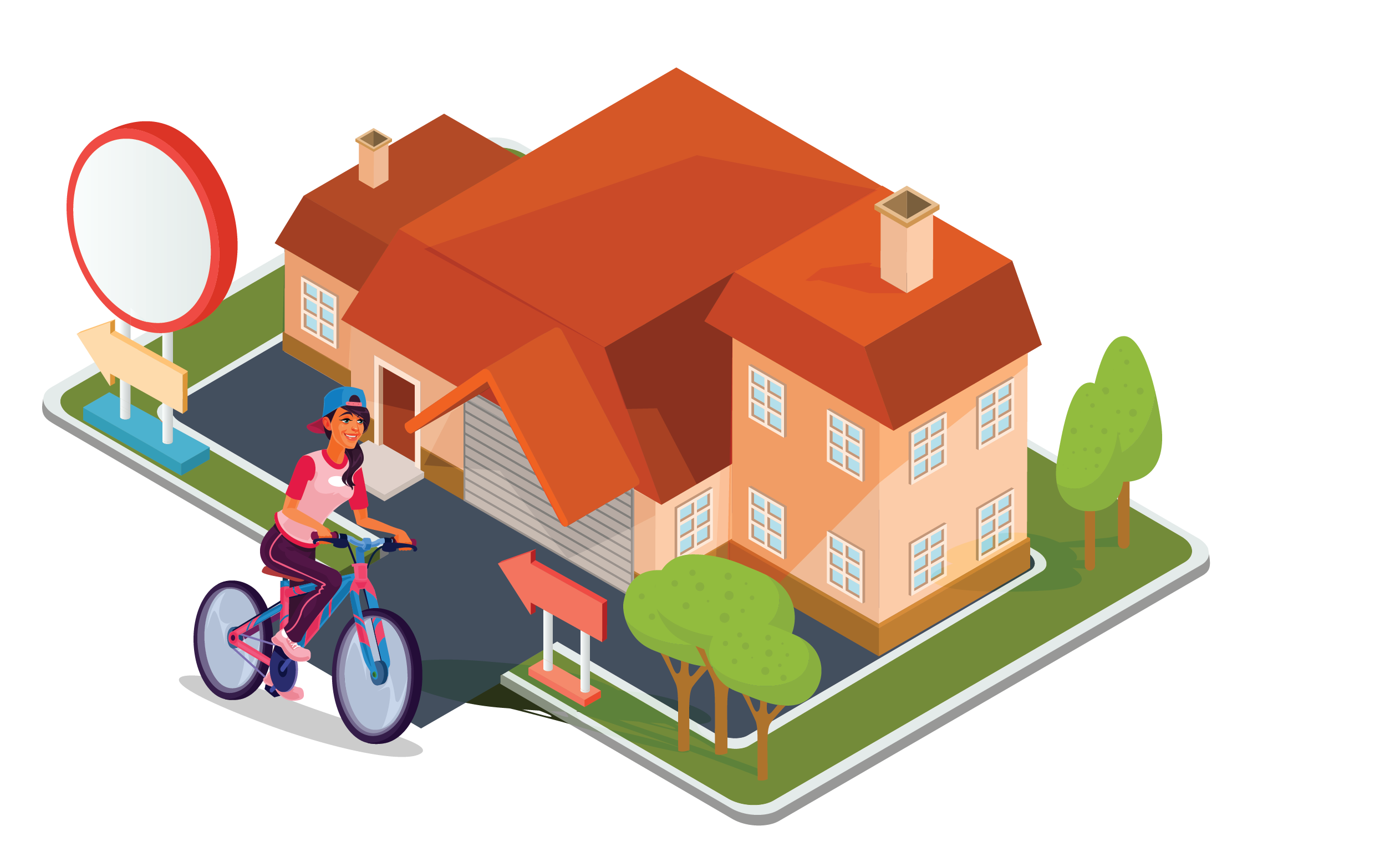

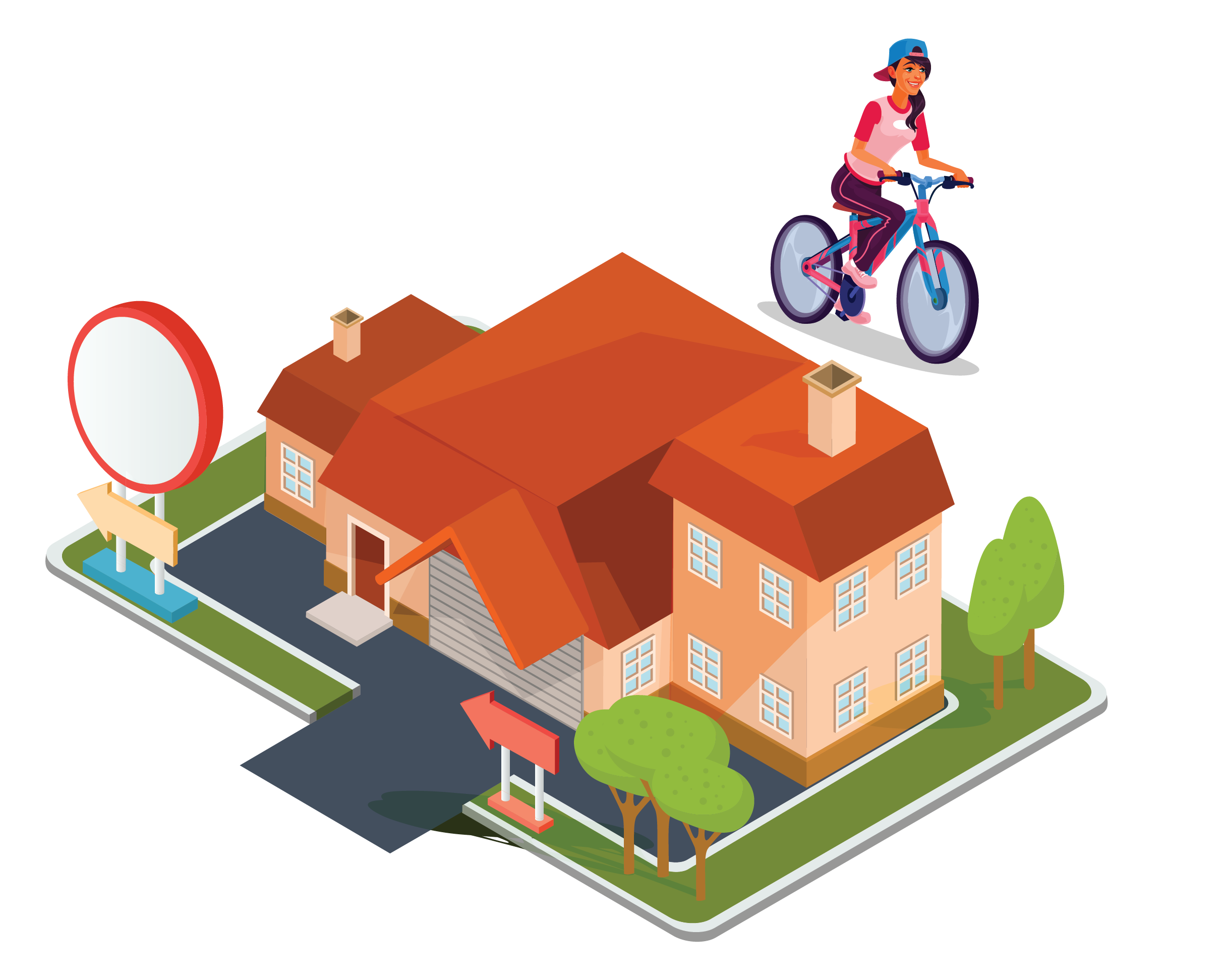

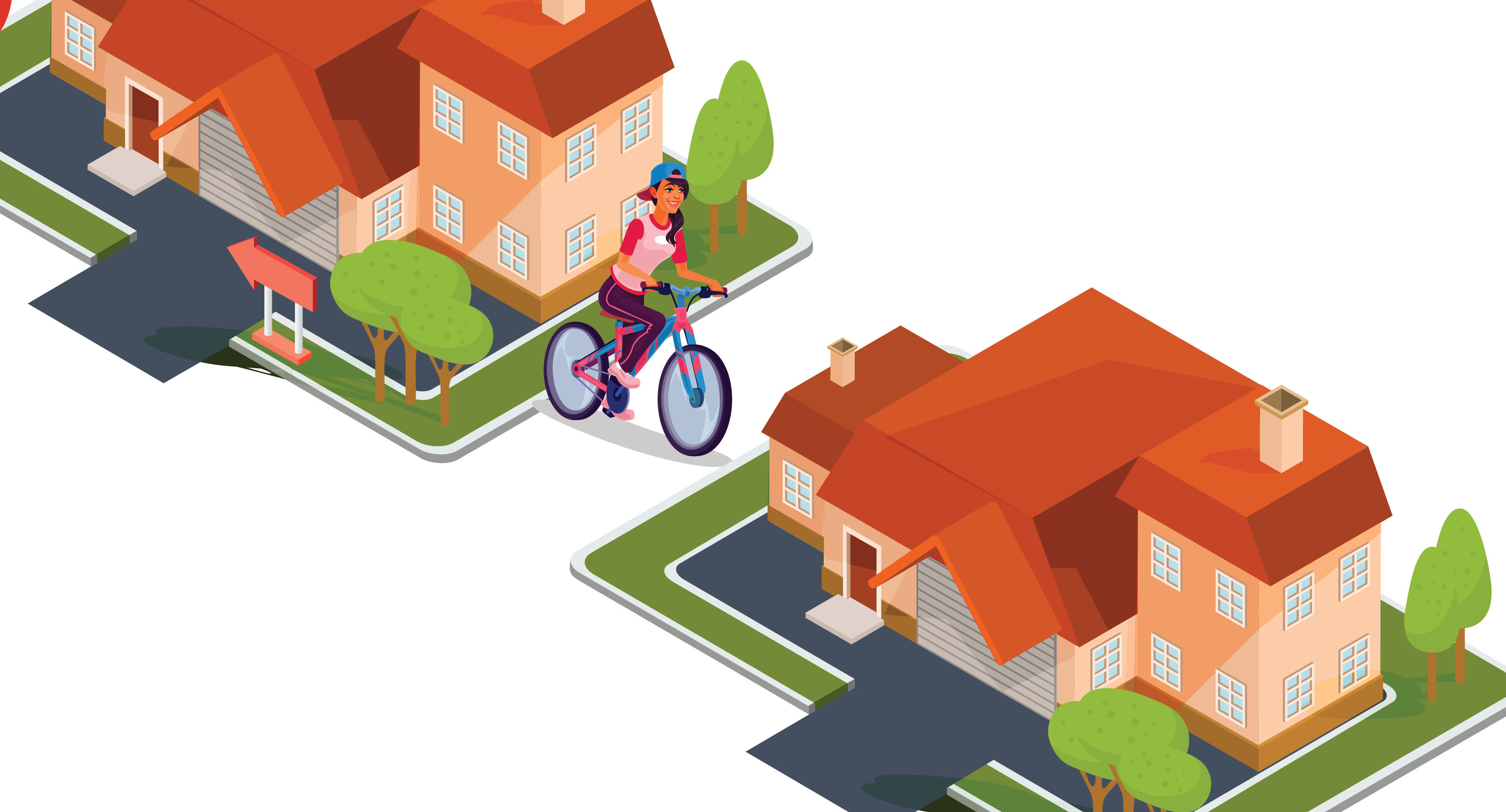

Now we will review some addresses. Pay attention.
Now we will review some addresses. Pay attention.
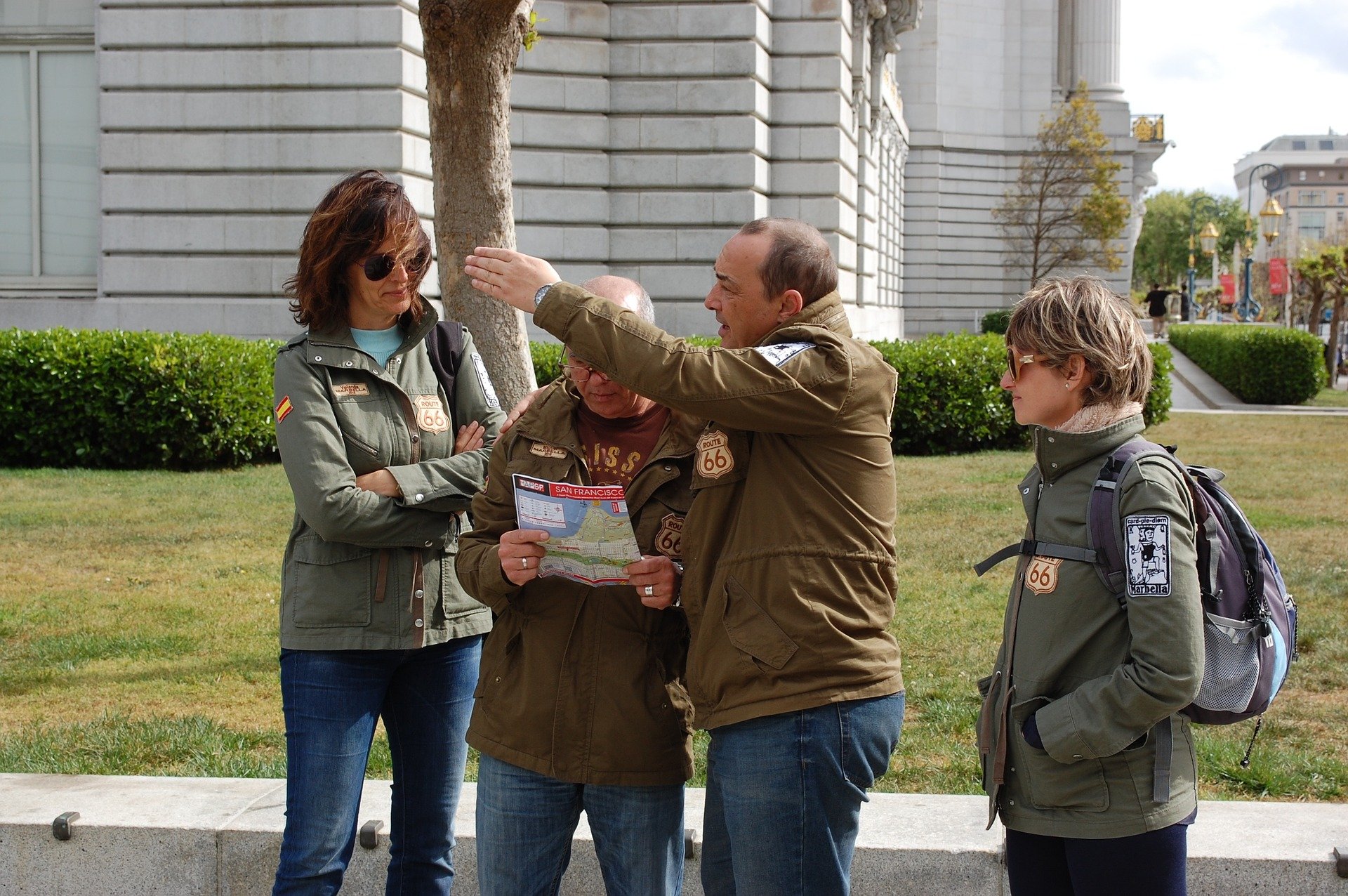
Gavilla. 2015. Conversación. Fotografía. Tomada de: https://pixabay.com/es/photos/friends-perdidos-personas-hablando-1255442/
Now look at the following images. Pay attention to the questions and answers used in English to ask for location of places.
Where’s the airport? It’s in front of the houses.
Where’s the black house? It’s behind the blue houses.

Where’s the cinema? It’s next to the airport.

Where’s the shoe store? It’s between the hotel and the park.

Where’s the taxi stand? It’s on the corner of Oak Street and Fifth Avenue.

Where’s the newsstand? It’s near the hospital.

Is there a post office near here? Yes. There’s a post office in front of the park.

Is there a newsstand in your community? No, there isn’t.
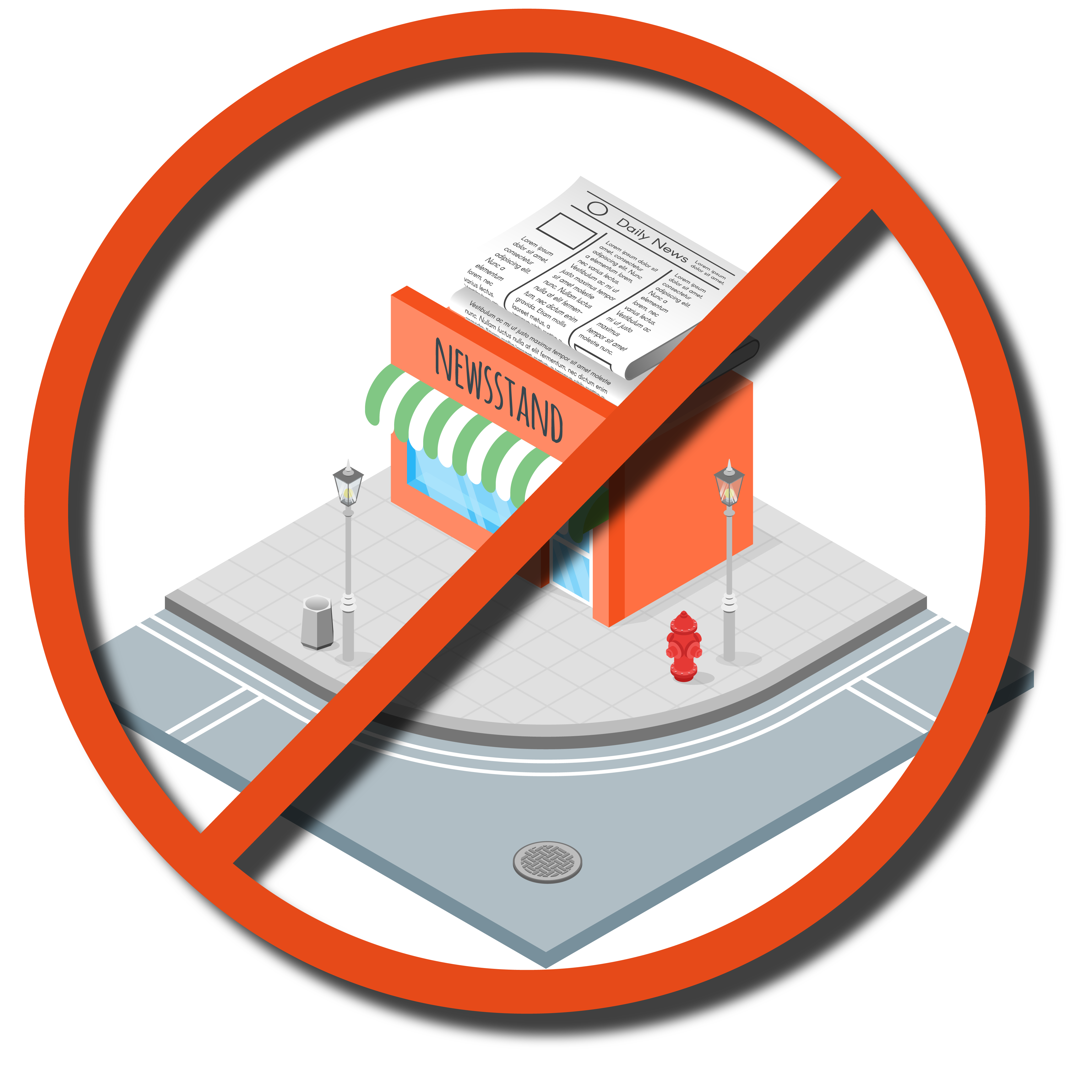
Is there a restaurant on New York Street? Yes, there is.

“WHERE” is used to ask for a LOCATION.
Example:
WHERE is the hospital?
It’s near the bus station.
The article ‘the’ is used because the question is about a specific place (both speakers know there is a hospital).
‘It’ refers to the place (the hospital).
“IS THERE” is used to ask for the EXISTENCE of something in a place.
Example:
IS THERE a church nearby?
Yes, there is. / No, there isn’t.
The article ‘a’ is used when the speaker asking the question doesn’t know if a place exists.
Now look at the following images. Pay attention to the questions and answers used in English to ask and give directions.
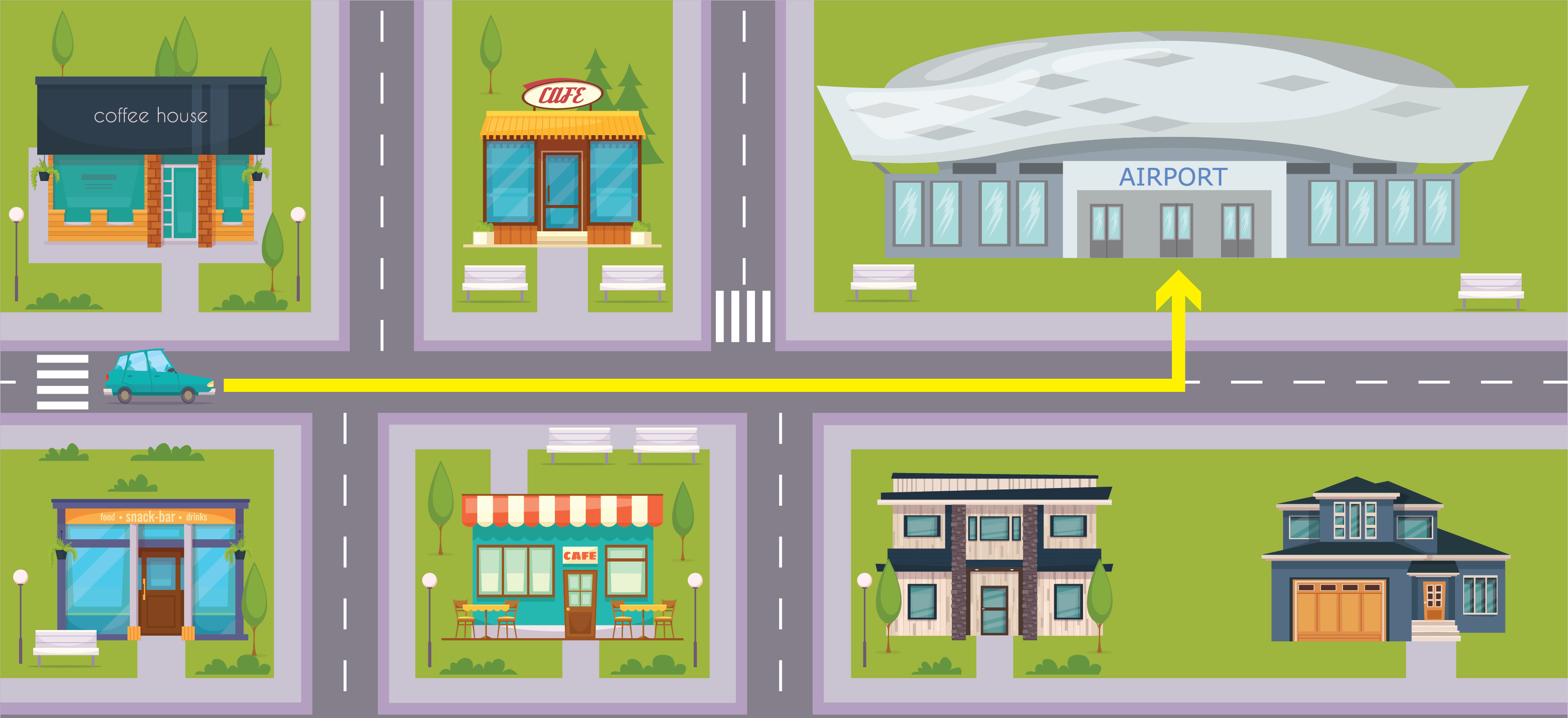

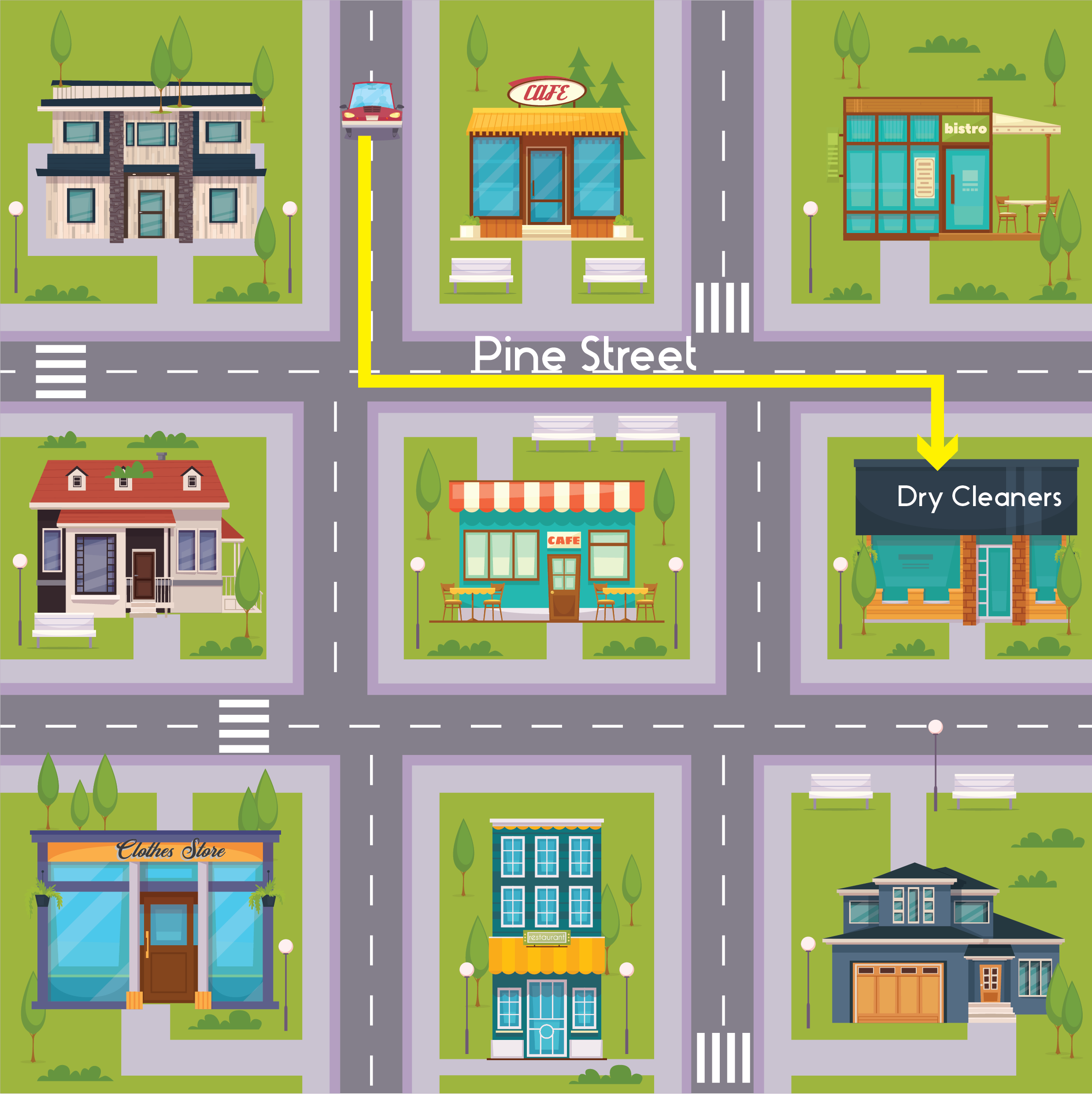
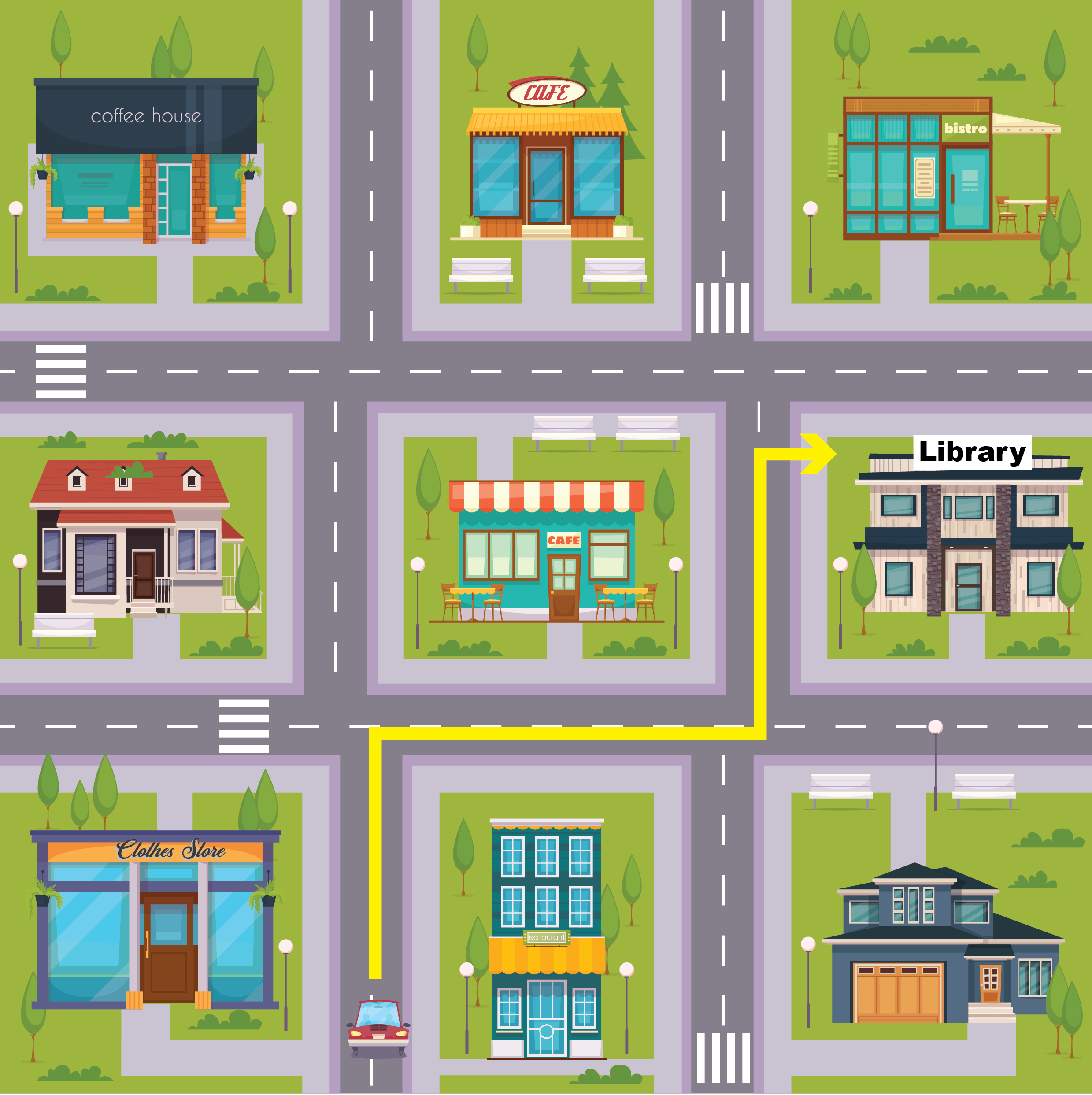
When a person asks for directions to get a place, the other speaker often uses the IMPERATIVE FORM; for example, TURN left, GO two blocks.
Notice that:
Imperatives don’t use ‘you’ as the subject.
Take the bus.

Don’t walk.

Drive. Not You drive.

Let’s practice the vocabulary about prepositions of place. It’s important to know this vocabulary to identify and describe locations in your neighborhood or in a map.
Let’s continue practicing prepositions of place. It will help you to identify places and locate landmarks as reference points for orientation, way finding and communication. Location of places appear in our sketches, in descriptions of meeting points or routes, and as the remarkable objects of an environment in tourist brochures.
Let’s practice prepositions of place and imperatives. It’s important to know this piece of language to ask and give directions when you don’t know how to get a place in a neighborhood, or when you actually don’t know where you are. If you are lost, don’t be shy and dare to ask.
Recognizing how to make questions about the existence of a place and how to get a location is a very important step before starting to speak. The following dialogues will help you to understand how to interact with people to get specific information if you don’t know where you are or if you are looking for a specific place.
Now, you are going to practice prepositions of place in a communicative context. This will help you to locate places correctly and describe a neighborhood.
It’s your turn to describe locations in the map. Prepositions of place are useful to express where something or someone is in a specific place. Are you well-oriented? Let’s see how you do it.
Let’s practice how to ask and give directions to get a place. This oral interaction may help you find the way if you are lost and discuss how to get there.
It’s time to show what you have learned about asking and giving directions to get a place. This topic is very important to help you locate landmarks in a map, find the way if you are lost, know about the existence of a place, discuss how to get there, and give directions to help others.
References
Latham-Koening, C., & Oxenden, C. (2013). American English File 1 Student Book. Oxford: OUP.
Saslow, J. and Ascher, A. (2015). Top Notch Fundamentals. Student’s Book. Third edition. NY: Pearson.
Swan, M., & Walter, C. (2011) Oxford English Grammar Course Basic. Oxford: OUP.
Liveworksheets.(2021).Retrieved April 14, 2021 from
You can continue practicing on the following sites. Just click on them.
Cómo citar